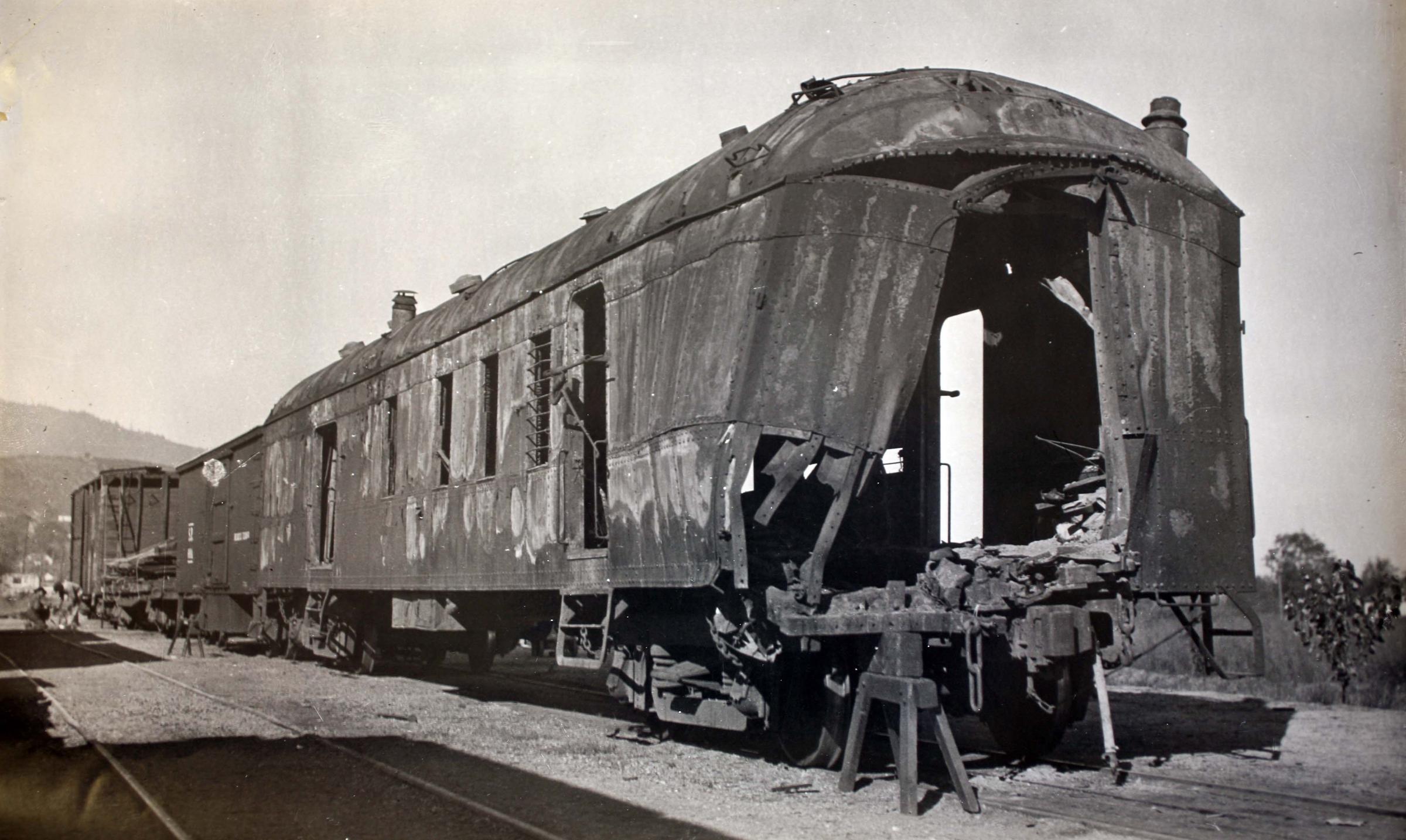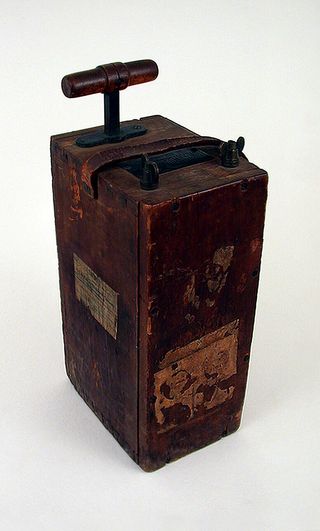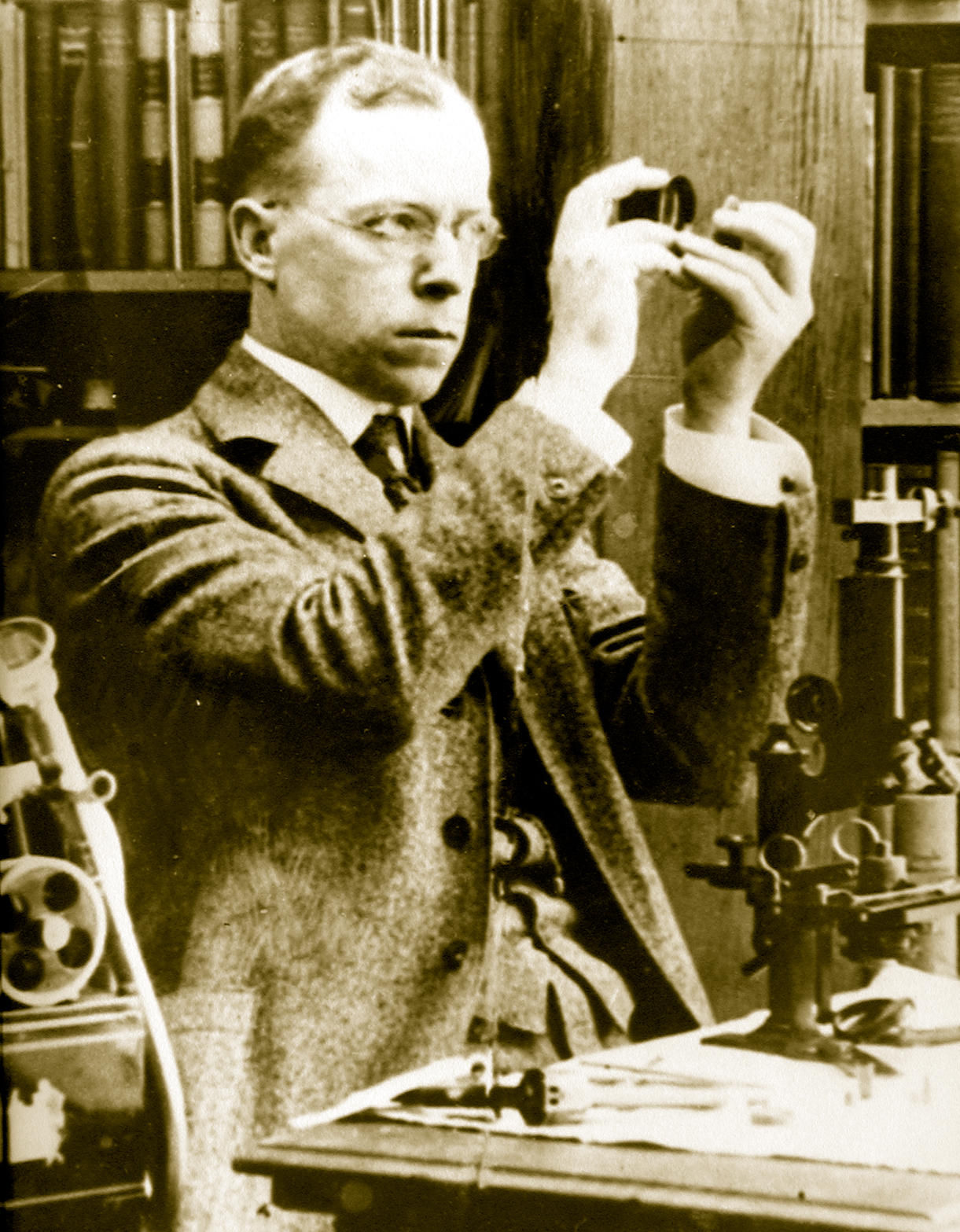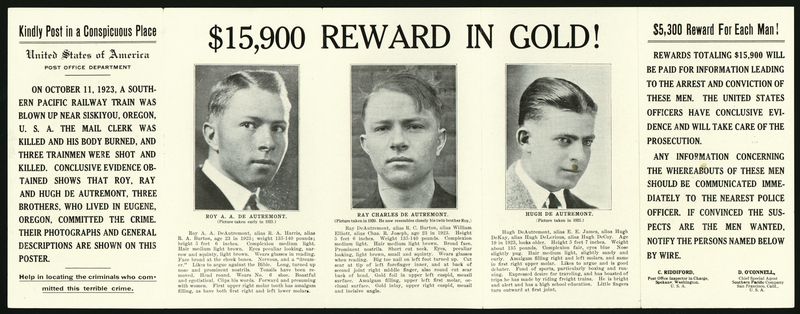
Photo: jpr
Back in 1923, three men attempted to rob a Southern Pacific train that was traveling through southern Oregon. The mail car was supposed to have over $40,000 worth of gold inside, as well as any cash that was in the mail. According to reports, right as the train was entering a tunnel, two of the three men jumped the engineer of the train with hopes of taking control.
The third man was tasked with getting into the mail car, which at the time was secured by giant locking doors. Knowing this, the men stole some explosives from a nearby construction site with intentions to blow the heavy doors open so they could reach the gold.
However, none of the men had experience with explosives and instead of using a small amount and working their way up, they drastically overshot the amount needed and ended up blowing the entire railcar to bits. Inside the mail car was the railway mail clerk, Elvyn Dougherty, and he, unfortunately, did not survive the blast.

Photo: postalmuseum
Now it wasn’t just armed robbery they were on the hook for, there had also been a murder. To make matters even worse, the mail car did not have the gold the men had expected to find. Not thinking clearly, the three men decided they couldn’t leave any witnesses and decided to shoot most of the employees on the train. The train’s engineer, brakeman, and fireman all were killed by robbers before they fled the scene.

The detonoator used by the men is curretly on display at the Postal Museum
Photo: postalmuseum
The detonator they used to blow up the mail car was left behind, as well as a few clothes which should have led the bloodhounds directly to their location. However, that’s not how it worked out. The men managed to elude authorities for quite some time.
Southern Pacific made a decision to bring in a highly specialized investigator, Edward O. Heinrich, who was often referred to as “The Edison of Crime Detection”. Heinrich focused more on the small details, similar to what they do in current investigations. He apparently immediately asked to see the clothes left behind that police had already checked over multiple times.

Edward O. Heinrich
Photo: jpr
From the clothes, he was able to determine there was a substance on them that was produced by a very specific Fir tree that was commonly found on clothing worn by Lumberjacks. This discovery alone cut down the possible suspects nearly by half. He also found a strand of hair that helped him determine the approximate age of one of the assailants.
But it was a small scrap piece of paper that he found that would ultimately lead him to the identities of the three men. Apparently, the scrap was a piece of a mail receipt that pointed directly at the DeAutremount Brothers, twins Ray and Roy and their teenage brother Hugh.

Photo: postalmuseum
It took almost 5 years to locate all three men, but by March of 1927, they were brought to justice. Each man plead guilty and was sentenced to life in prison.

